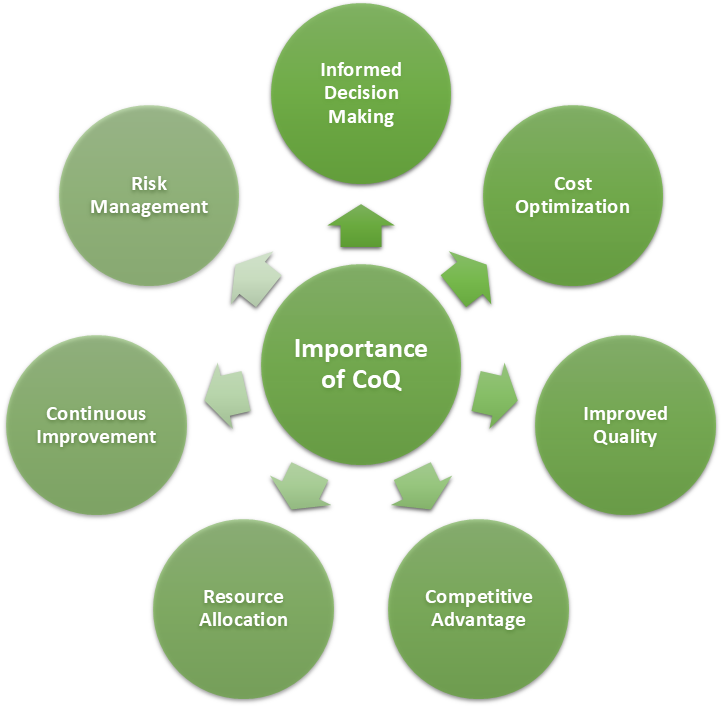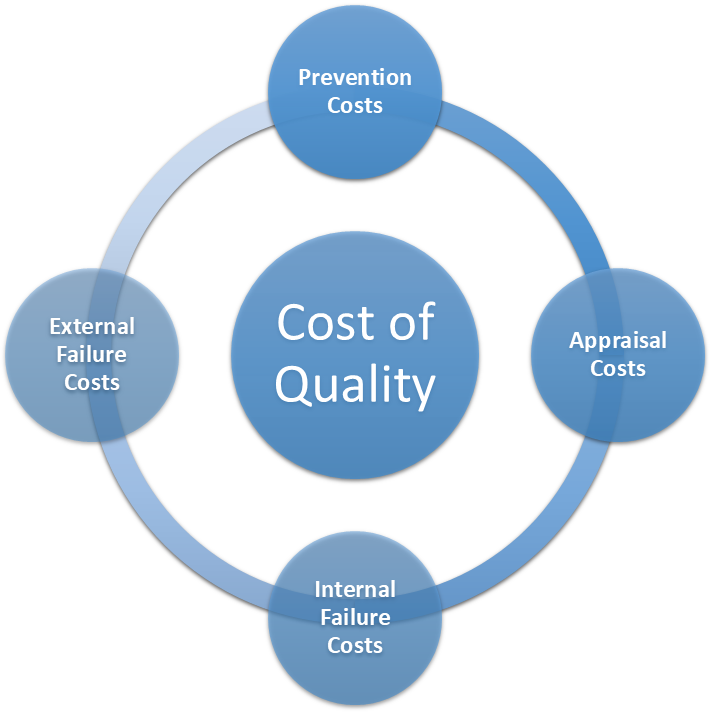What is the Cost of Quality in Software Testing?
|
|
“A 2022 report by CISQ estimated that the cost of poor-quality software in the US has risen to at least $2.41 trillion.”
Today, when AI is leading the world, software is an integral part of any business. This means that the time that should be taken to release software in the market has considerably reduced. While this is great for customers, it is problematic for the application’s quality as the chances of issues being present in the software are now higher. This is where the concept of the “Cost of Quality” becomes crucial.
Understanding and managing the cost of quality is essential for delivering superior software products and achieving long-term success, whether you’re a software developer, QA engineer, or a decision-maker in the tech industry.
What is Cost of Quality (CoQ)?
The cost of quality in software testing refers to the total cost associated with ensuring that software meets quality standards. It is a crucial metric for ensuring that quality efforts are effective and cost-efficient, which ultimately contributes to the success and sustainability of the software development process. Read the Metrics for the Engineering Manager here.
Why is CoQ important?
CoQ has become indispensable due to its strategic importance in business. It helps with:
- Informed decision-making: Understanding CoQ helps organizations make informed decisions about where to allocate resources. By analyzing the costs associated with prevention, appraisal, internal failure, and external failure, companies can determine which quality practices and processes are worth investing in to optimize overall quality.
- Cost optimization: CoQ provides insights into where money is being spent and helps identify areas where costs can be reduced. For example, investing more in prevention might lower internal and external failure costs in the long run which can lead to overall cost savings.
- Improved quality: By tracking and managing CoQ, organizations can identify and address issues that impact software quality. This leads to fewer defects, better performance, and enhanced user satisfaction.
- Competitive advantage: High-quality products typically result in better customer experiences and higher satisfaction. Managing CoQ effectively can lead to fewer customer complaints, improved reputation and a stronger market position.
- Resource allocation: CoQ helps prioritize quality-related activities based on their financial impact. It enables teams to focus on the most critical areas that offer the greatest return on investment, thus improving efficiency and effectiveness.
- Continuous improvement: Analyzing CoQ fosters a culture of continuous improvement by highlighting the impact of quality initiatives. It encourages organizations to regularly review and refine their processes to enhance quality and reduce costs.
- Risk management: Organizations can better manage risks related to software quality by understanding the costs associated with defects and failures. This includes mitigating potential issues that could affect the product’s success and the company’s reputation.
Read more about Risk-based testing.

Components of CoQ
The cost of quality in software testing can be seen as four main components:
Prevention costs
These are costs associated with activities designed to prevent defects from occurring in the first place. They include:
- Training and development: Investing in the skills and knowledge of team members.
- Process improvement: Implementing and refining processes to enhance quality.
- Design reviews: Evaluating design specifications and architecture to identify potential issues early.
- Quality planning: Developing quality standards, metrics, and procedures.
Appraisal costs
These are costs related to evaluating and measuring the quality of the software to ensure it meets the required standards. They include:
- Testing: The costs for various testing activities such as unit testing, integration testing, system testing, and user acceptance testing.
- Inspections: Costs for code reviews and other forms of inspection.
- Audits: Costs associated with quality audits and compliance checks.
- Quality control: Implementing quality control measures to monitor and measure product quality.
Internal failure costs
These are costs incurred when defects are found before the software is released to customers. They include:
- Rework: The cost of fixing defects and modifying the software.
- Debugging: Costs associated with identifying and resolving issues.
- Retesting: Costs for re-running tests to ensure that fixes are effective.
External failure costs
These are costs related to defects discovered after the software has been released to customers. They include:
- Customer support: Costs for handling customer complaints and providing support.
- Returns and refunds: Expenses associated with processing returns or issuing refunds.
- Reputation damage: Costs related to the impact on the company’s reputation, which can affect customer trust and future sales.
- Lost sales: The loss of revenue due to customer dissatisfaction or product recalls.
- Patches and updates: Costs for deploying fixes and updates to address issues found after release.

Thus you can calculate CoQ as
Cost of Quality (CoQ)=Prevention Costs+Appraisal Costs+Internal Failure Costs+External Failure Costs
Strategies to improve Cost of Quality in software testing
To improve the CoQ, you need to optimize the balance between prevention, appraisal, internal failure, and external failure costs.
Invest in prevention
Try to invest more in the prevention stage to keep quality standards from dipping. Here’s what you can do:
- Implement best practices: Adopt industry best practices in software development and testing. This includes standardized coding practices, robust design principles, and effective documentation. Read: Maximize Your Test Script Quality.
- Continuous training: Regularly train development and testing teams to stay updated with the latest tools, technologies, and methodologies.
- Automate testing: Invest in test automation tools to reduce manual testing efforts and catch defects early.
Enhance appraisal processes
One cannot prevent quality issues altogether, but one can definitely build a thorough process to detect them. Here are some ways you can do this:
- Improve test coverage: Ensure that test cases cover all critical aspects of the software, including edge cases and performance scenarios. Know in detail: What is Test Coverage?
- Conduct thorough reviews: Regularly perform code reviews, design reviews, and architecture reviews to identify issues before they become problematic.
- Utilize advanced tools: Leverage advanced testing tools and frameworks for more effective testing. Read: Test Automation with AI.
Reduce internal failure costs
You can focus on these areas to reduce the costs that arise due to internal failures:
- Optimize defect management: Implement an efficient defect management process to address and resolve issues quickly. Use defect tracking tools to monitor and prioritize defects.
- Enhance debugging techniques: Use advanced debugging tools and techniques to reduce the time and effort required to identify and fix issues.
- Improve communication: Having better communication between development and testing teams to ensure that defects are understood and resolved efficiently.
Minimize external failure costs
Try to bring down external failure costs by:
- Focus on customer feedback: Regularly gather and analyze customer feedback to identify and address issues early. Implement mechanisms for continuous user feedback and incorporate it into the development process.
- Implement proactive support: Set up proactive customer support mechanisms to quickly address and resolve issues reported by users. This includes creating comprehensive knowledge bases and support documentation.
- Enhance quality control: Establish rigorous quality control processes to catch defects before they reach customers. This includes extensive beta testing and user acceptance testing.
Monitor and analyze CoQ
Having a finger on the pulse is going to help you decide which aspects of CoQ need your attention. Here’s what you can do about it:
- Regularly review CoQ metrics: Continuously monitor and analyze CoQ metrics to identify trends and areas for improvement. Use this data to make informed decisions about resource allocation and process improvements.
- Conduct root cause analysis: When defects or issues occur, perform a root cause analysis to understand the underlying causes and implement corrective actions to prevent recurrence.
- Benchmark against industry standards: Compare your CoQ metrics against industry benchmarks to gauge performance and identify areas where improvements can be made.
Build a quality culture
If development needs to happen at express speed, then quality needs to be everyone’s responsibility. Here’s how you can work on that:
- Promote quality awareness: Encourage a culture where quality is a shared responsibility across all team members. This includes emphasizing the importance of quality in training, communication, and organizational values.
- Incentivize quality improvements: Recognize and reward teams and individuals who contribute to quality improvements and cost reductions. This can help motivate employees to focus on quality. Read: How to Save Budget on QA.
Implement Agile and continuous improvement practices
Modern methodologies understand the importance of quality in software and accommodate for it. Here’s how you can make the most of them:
- Adopt Agile methodologies: Use Agile methodologies to iteratively develop and test software which can help catch defects early and reduce overall quality costs. Read: Mastering Agile with BDD.
- Continuous improvement: Regularly review and refine processes to enhance efficiency and effectiveness. Implement practices like continuous integration and continuous delivery (CI/CD) to streamline development and testing.
Using automated testing to improve CoQ
Automated testing is a great way to lower prevention costs. Through test automation, you can cover more ground at a faster pace, thus improving the quality of your software.
However, you need to be careful when it comes to choosing a test automation tool. You want one that is suitable for your testing needs, easy to onboard, and fits your budget. One great tool that makes software testing easy and offers ROI is testRigor.
testRigor for automated testing
testRigor is an intelligent test automation tool that uses generative AI to emulate a human tester. You can write test cases in plain English using this tool which makes it easy for anyone to automate tests. This helps promote collaboration and the responsibility of maintaining quality amongst team members.
Along with easy test case writing, you can also benefit from this tool’s fast test execution capabilities and bare minimum test maintenance costs. This cloud-based tool can run tests across different platforms and browsers. You can also perform different types of testing like functional, regression, end-to-end, acceptance, UI, database, and API testing.
Conclusion
The Cost of Quality (CoQ) in software testing is a critical metric that can help you understand the total expenses associated with preventing, detecting, and correcting quality issues. By effectively managing CoQ, organizations can improve product quality, reduce costs, and enhance customer satisfaction.
If you strive to manage and balance the costs associated with the various aspects of quality, then it will be easier for you to maintain good quality standards consistently.
| Achieve More Than 90% Test Automation | |
| Step by Step Walkthroughs and Help | |
| 14 Day Free Trial, Cancel Anytime |












